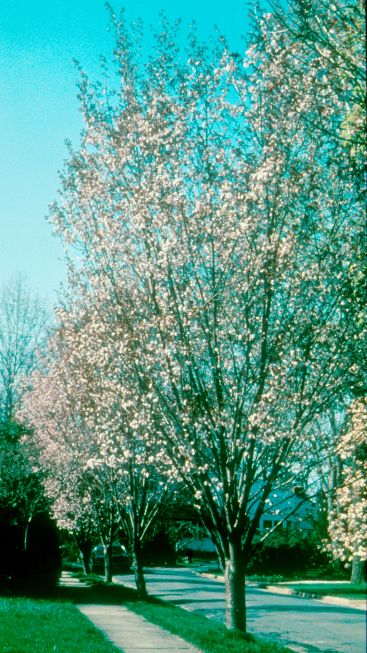| PSC 2620: Woody Trees and Shrub | Course Home | Week 5 |
Prunus serrulata - Japanese Flowering Cherry
Plant Viewer
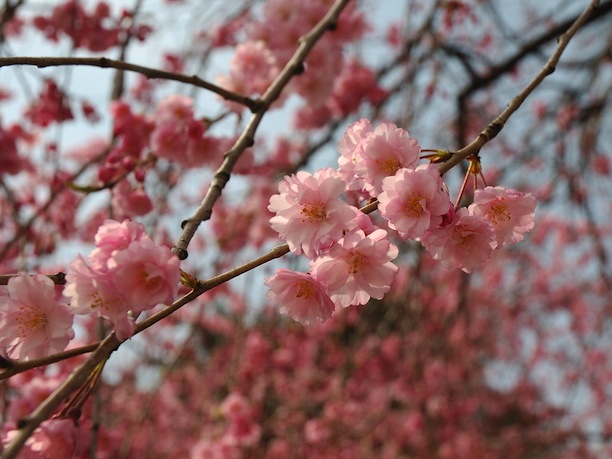 |
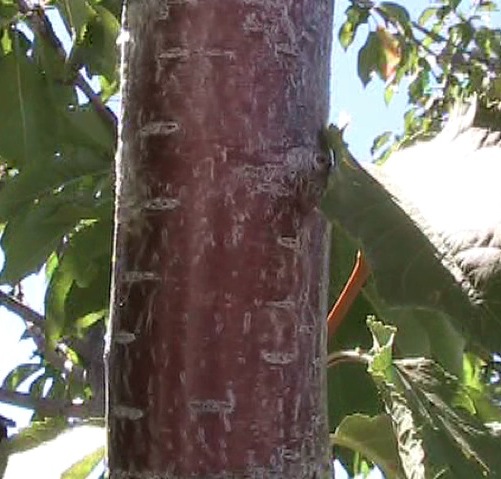 |
| The fragrant blossoms are extremely showy. There are many different cultivars with blossoms ranging from white to multiple shades of pink, and there are both single and double blooming varieties. Image: Wikipedia | The bark is a brownish-red with prominent horizontal lenticels. |
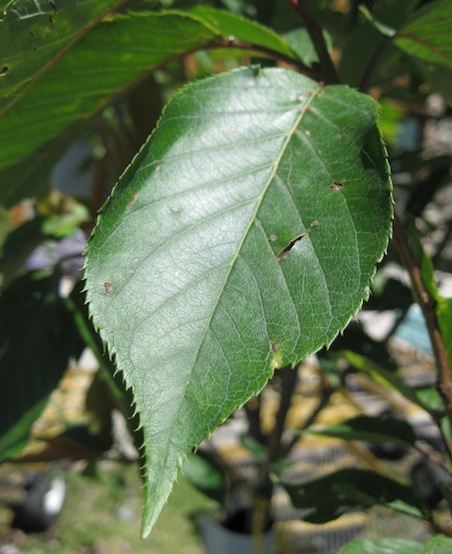 |
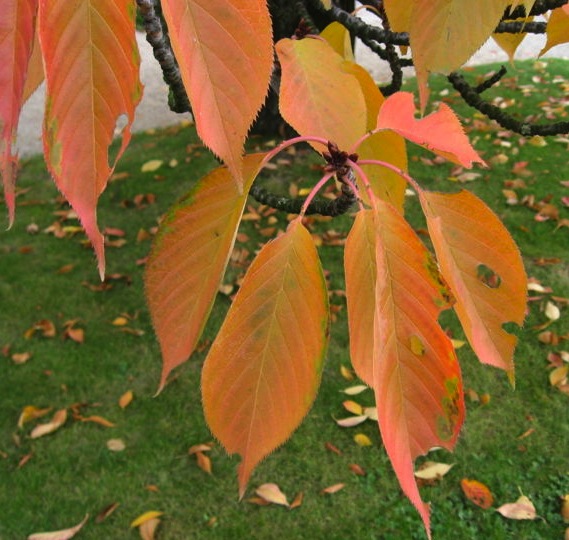 |
| The leaves are dark green and ovate in shape, tapering to a point. The edges are finely serrated with very pointed serrations. | The fall color varies from yellows and oranges to bright red on some cultivars. Image: Wikipedia |
Plant Description
Prunus serrulata is a popular flowering tree in many parts of the nation. There are fewer in Cache Valley because many of the most popular cultivars are marginal for our climate. Flowering cherry is one of the few plants for which people plan vacations around in order to witness their showy blossoms. The species grows to be 50-75 feet tall, but few of the commercial cultivars reach half that size. It naturally has a vase shape with an open, upright branching habit. It has a comparatively short lifespan for a tree, often dying before the tree is 50 years old.
The tree has many ornamental characteristics which contribute to its popularity. The bark is a shiny reddish-brown with prominent horizontal lenticels. In the spring it is at its peak, with medium-sized profuse white or pink blossoms covering the tree. The blossoms are either single or double, depending upon cultivar. The blooms persist for a couple of weeks before tapering off.
The 3-5 inch long leaves are dark green, ovate in shape with a doubly-serrated margin. The leaves are arranged alternately on the stem. In the fall the leaves turn a bronze color or muted red that is quite showy.
Landscape Use
Japanese Flowering Cherry has many different characteristics that make it suited to a wide variety of uses. Its showy flowers and good fall color make it an excellent candidate for an ornamental specimen tree. Its natural vase shape and tolerance of poor soil makes it a good choice for a street tree or parking lot tree. Larger varieties can be used as lawn trees or even small shade trees.
Points of interest
Prunus serrulata has several pests and problems in our region. It is susceptible to aphids, scale, leaf spot and fireblight. Winter kill can also be a problem with more fragile varieties, causing a significant amount of dieback.
Notable Cultivars
Kwanan The most cold hardy of the showy, double blooming cultivars. Its large pink blossoms are extremely showy when in bloom. It grows to 30 feet high and has an excellent vase shape. The fall leaf color is red.

Prunus sargentii - Sargent Cherry Cold hardy to zone 4. Bears single pink blossoms in the spring. Grows 30 feet high and wide and has a good upright branching pattern.
